Affordable Solar Rooftop Solutions for All Indians: What Entrepreneurs Think Needs to Change
Aditya Dave prides himself on the terrace of his Ahmedabad home — it’s where a striking sunflower now stands tall. Not a real one, but a solar tree designed to resemble the flower, complete with a gazebo.
It looks beautiful, yes. But for Aditya, its value goes beyond aesthetics; it also saves him Rs 5,000 every month on electricity.
How, you ask?
Instead of installing large solar panels across his rooftop, Aditya chose a more compact solution — a solar tree and gazebo designed by Shani Pandya, a 30-year-old engineer and founder of Imagine Powertree Private Ltd. “The gazebo and solar tree look like a sunflower,” Aditya says. “They’ve turned our terrace into a beautiful and functional space.”
This innovative setup is part of a growing shift toward vertical solar solutions — solar trees, gazebos, and tiles — that generate clean energy while conserving space. By rethinking how solar panels are installed, Shani is helping city homes make the most of limited rooftops. A single 20-kilowatt solar tree, for instance, can power up to six homes in a day.
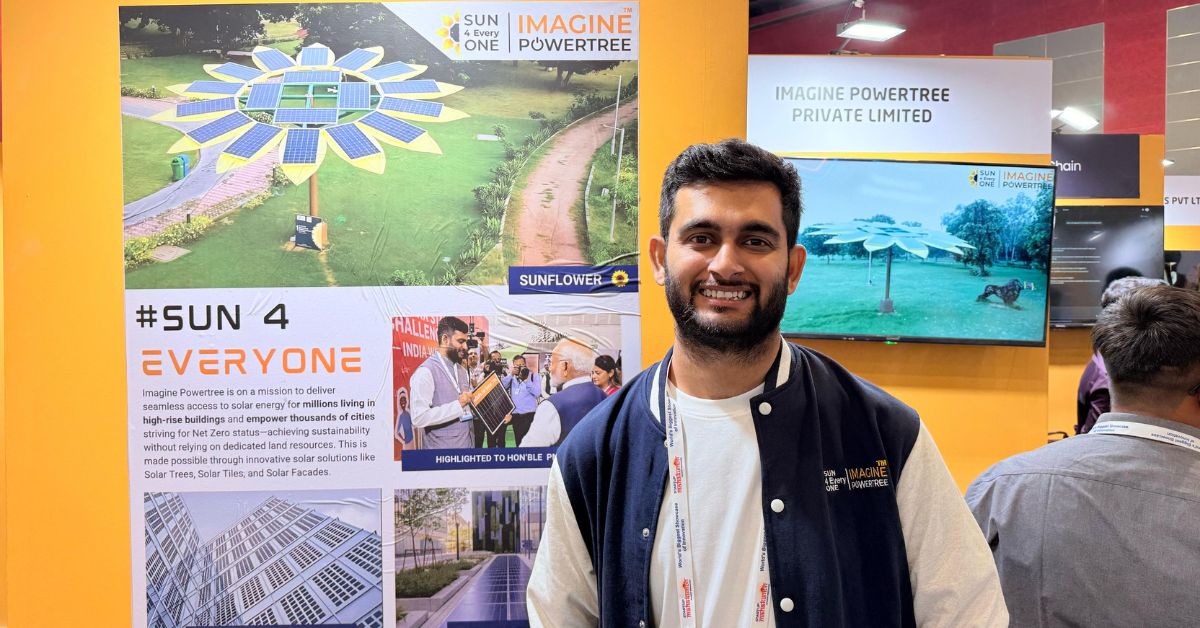 Shani Pandya, founder of Imagine Powertree Private Ltd.
Shani Pandya, founder of Imagine Powertree Private Ltd.
But while rooftop solar often brings to mind urban terraces and city skylines, its impact is just as powerful in places far removed from the grid.
In Mulshi taluka, a subdivision of Pune district in Maharashtra, Sonu Shitaram Jadhav’s life was dictated by sunlight. After sunset, his village surrendered to darkness by 7:30 pm, forcing residents to depend on kerosene lamps.
For Sonu and his fellow villagers, nights stretched endlessly, filled with the eerie calls of wildlife, the anxious barks of the village dogs, and a persistent, underlying threat of crime. Until six months ago when something extraordinary began to unfold in their community.
That’s when Tanveer Inamdar (28), a mechanical engineer from Pune, chose to change their story. Through his ‘Mission Urja’, he brought electricity via groundbreaking portable solar solutions. These panels can be effortlessly attached to different surfaces using tie clips. When it’s time to relocate, families can simply pack them up and carry them along.
Reflecting on the transformation, Sonu beams with gratitude, “Thanks to solar power, we have light bulbs, fans, and can even charge our mobile phones.”
In an insightful conversation with the founders of startups in the solar energy sector — Tanveer Inamdar, Shani Pandya, and Shilpa and Suneet Kotwal — we explore how these entrepreneurs are reshaping the way Indians harness solar power, right from their rooftops.
The challenge: Unreliable electricity and financial strain
Despite these promising developments, issues in access to reliable power remain. “Consistent electricity access in rural India is fraught with challenges. Many households face frequent fluctuations and maintenance issues, resulting in month-long power outages, especially during the monsoons. This unreliable infrastructure leaves many in darkness, especially in smaller communities not deemed viable for grid connections,” Tanveer points out.
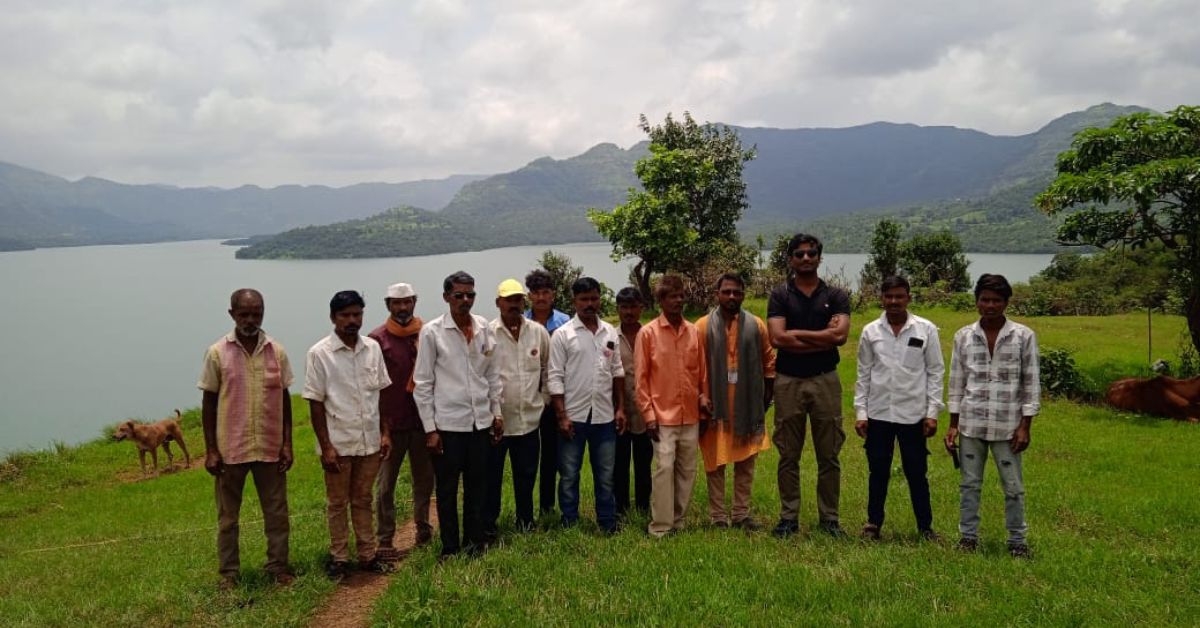 Tanveer brought electricity via groundbreaking portable solar solutions.
Tanveer brought electricity via groundbreaking portable solar solutions.
Financial constraints further complicate matters. “Villagers often can’t afford the Rs 100 monthly charges for electricity, let alone the actual bill. In villages, most people depend on farming, and their income isn’t steady. It changes with the seasons. So even a small electricity bill can become a burden,” he adds.
Recognising this, Tanveer’s mission focuses on deploying solar solutions to address both the electricity shortfall and the burden of recurring energy costs. “Solar reduces dependency on erratic grid connections and allows villagers to own and maintain their energy systems,” he explains.
Across India, rooftop solar installations are gaining momentum. In 2024 alone, the country added 3.2 GW of rooftop solar capacity, propelled by robust residential demand and initiatives like the Pradhan Mantri Surya Ghar programme.
The fourth quarter of 2024 saw a remarkable 64 percent increase in installations. States like Gujarat, Maharashtra, and Kerala are setting the pace for this expansion.
Making solar affordable
Startups are now offering solar systems at costs lower than traditional energy sources, creating viable options for rural households.
Shani’s solar trees and gazebos, for instance, maximise power generation in limited spaces, with prices ranging from Rs 20,000 to Rs 60,000 per kilowatt. “An average household needs a three-kilowatt system, which costs Rs 1.8 lakh, but government subsidies of up to Rs 78,000 bring it down to around Rs 1.02 lakh,” he says.
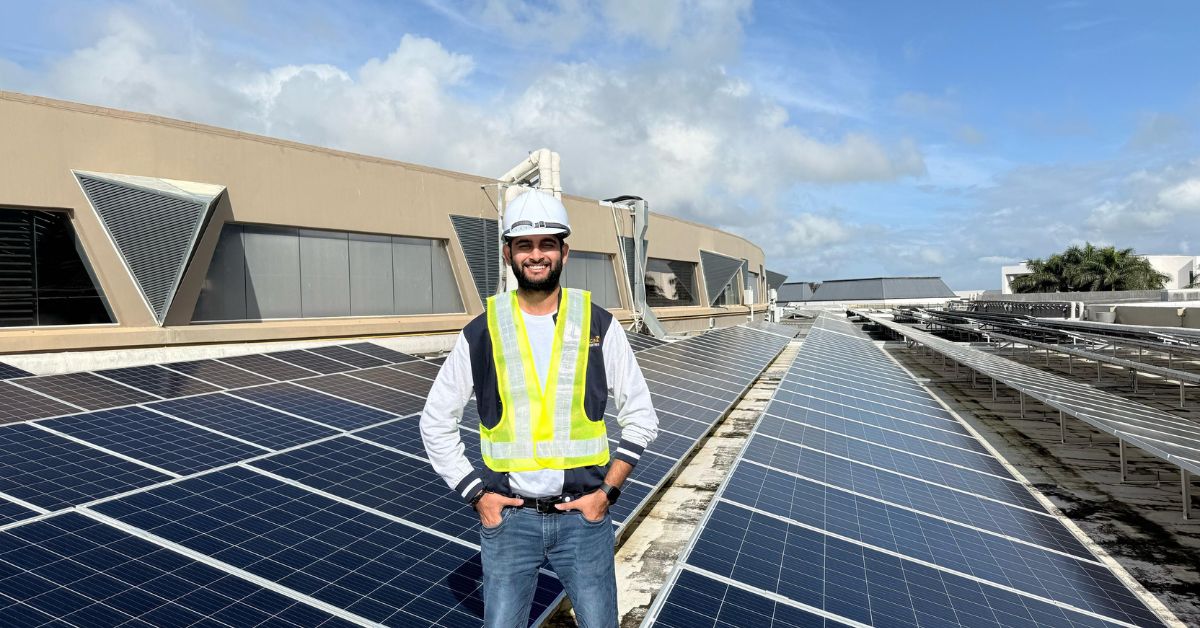 By rethinking how solar panels are installed, Shani is helping city homes make the most of limited rooftops.
By rethinking how solar panels are installed, Shani is helping city homes make the most of limited rooftops.
To bridge the gap, Shani connects families to banks. “Up to 70 percent of the installation cost can be financed with bank loans at an interest rate of seven to eight percent. That means families only have to pay 30 percent out of pocket — roughly Rs 25,000 to Rs 30,000,” he adds.
Meanwhile, in Pune, Shilpa and Suneet Kotwal, founders of Solum Enterprises, are championing grid-free solar systems with battery storage, which is crucial for areas with unstable power supply. “Our systems cost around Rs 1 lakh per kilowatt, but include batteries to ensure uninterrupted usage,” Suneet explains. Although costlier than grid-tied systems, these setups offer independence from persistent outages.
Despite their smaller operation, Shilpa and Suneet have successfully completed installations for various clients, from bungalows to schools. “We are also keen on exploring grid-free community solar setups for villages,” Shilpa says.
All four founders agree that while rooftop solar installations in India show promising growth, there’s a pressing need for reforms. Based on their experience in the sector, they highlight key areas where reforms could significantly enhance the solar energy landscape:
1. Decentralised energy systems and local governance
Tanveer says solar projects work best when local communities are in charge. Giving people control makes the system more sustainable in the long run. He suggests that community ownership models, where villagers pay a nominal maintenance fee, can enhance responsibility and ensure the longevity of installations.
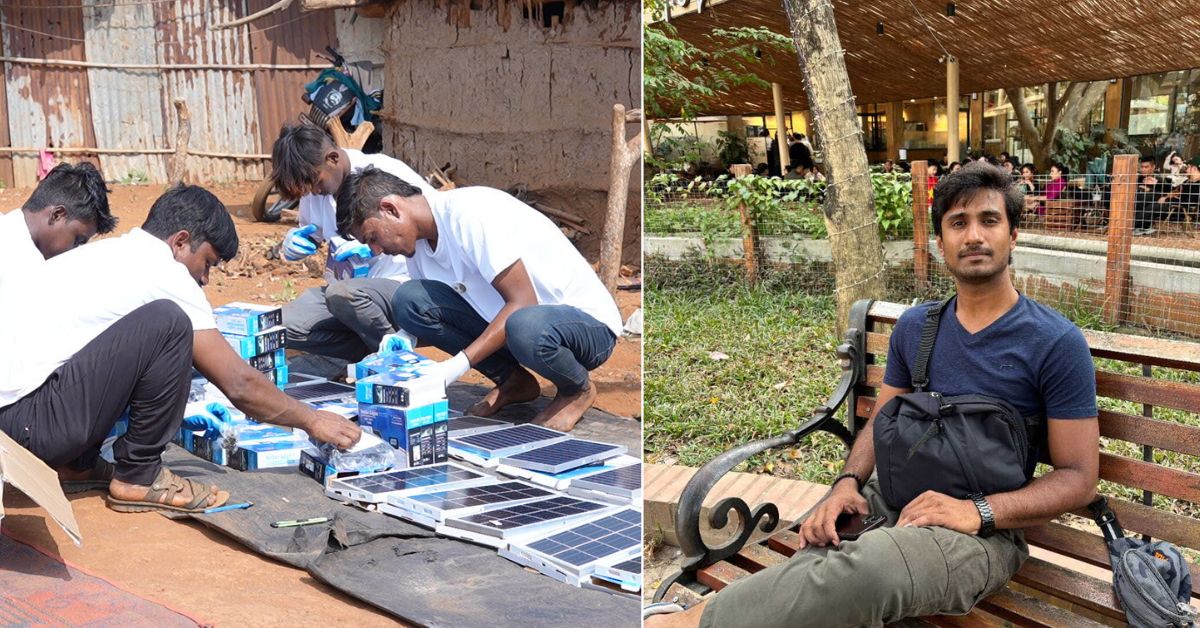 Tanveer believes developing local technician-training initiatives can empower communities to maintain their own systems.
Tanveer believes developing local technician-training initiatives can empower communities to maintain their own systems.
This decentralised approach empowers communities to manage their energy resources effectively. For instance, through his Mission Urja, he collects modest monthly fees between Rs 10 and Rs 50. For operations, he leverages support from corporations.
2. Addressing supply deficiencies and ensuring comprehensive support
Tanveer points out systemic issues where donated solar equipment lacks essential components, such as inverters or batteries, which limits their effectiveness. “Ensuring that all elements of a solar setup are provided is crucial for utility,” he says, adding that skilled youth should also be involved in deployment and upkeep.
3. Facilitating innovative energy solutions
Reforms should also support innovative solar uses — like solar-powered tools and machinery for farmers and artisans — so that renewable energy can boost livelihoods. “Government sponsorship for eco-friendly alternatives like solar stoves, which reduce carbon emissions significantly, can transform energy usage in rural areas,” adds Tanveer.
4. Support for new technologies
Shani believes that clearer guidelines and faster certification processes should be put in place for innovative solar technologies, such as solar tiles and solar facades. Currently, these face long approval delays due to the lack of standards. Streamlining the process would help new products enter the market more quickly and efficiently.
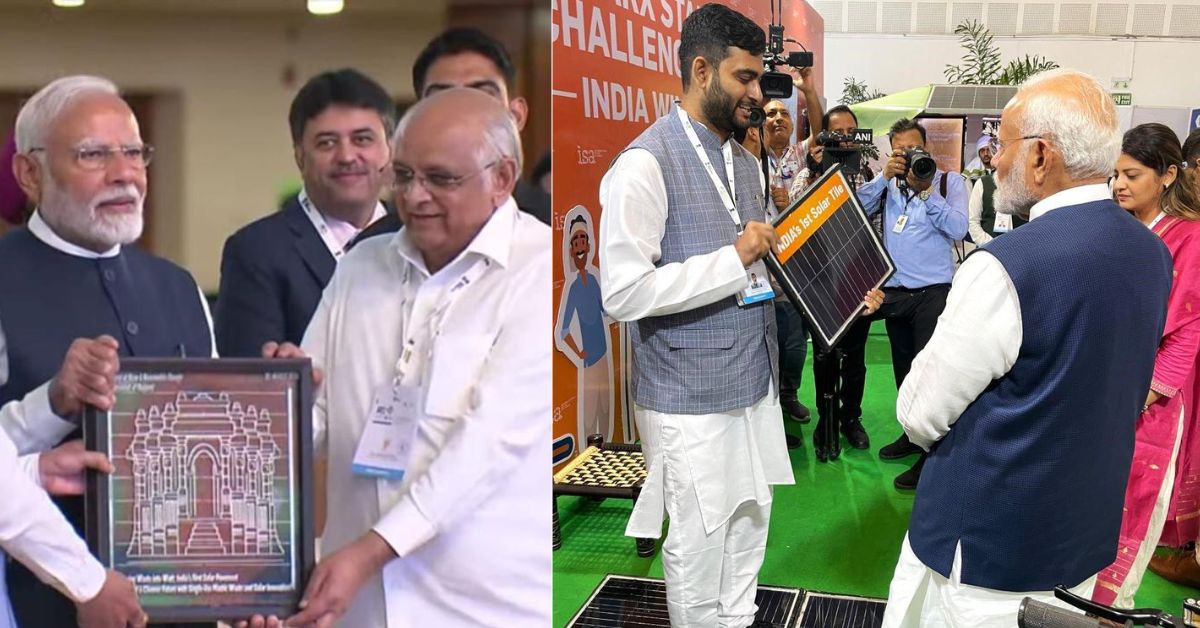 Recently, Shani met PM Narendra Modi and showcased the innovative solar tile to him.
Recently, Shani met PM Narendra Modi and showcased the innovative solar tile to him.
“For instance, when developing a solar tile, there should be a clear process or committee within the Ministry of New and Renewable Energy to ensure compliance with mandatory ALMM (Approved List of Models and Manufacturers) and BIS Registration,” he explains. “Also, for new products, usually there are no defined standards, which leads to delays and extended development timelines.”
5. Encourage off-grid systems
Suneet advocates for off-grid systems with energy storage. “This approach could ensure better reliability of solar power, especially in areas facing frequent load shedding and power cuts,” he mentions.
“While solar solutions are appealing in rural areas, there are no substantial government incentives for off-grid systems. Reforms should focus on supporting village-scale, grid-free solar projects that provide their own energy solutions without relying on the national grid,” says Shilpa.
6. Re-evaluate subsidy schemes
Under the PM Surya Ghar Muft Bijli Yojana, the government currently covers 60 percent of the solar unit cost for systems up to 2 kW, and 40 percent for systems between 2 and 3 kW. The subsidy is capped at 3 kW with a maximum benefit of Rs 78,000.
Suneet sees the current framework as limiting. He believes it needs to evolve so that larger solar systems can also become affordable — without depending too much on the government.
“The current system offers subsidies only up to 3 kW, but an energy consumption level of 3 kW is minimal. These subsidies are helpful for those below the poverty line, but not for others, who may need more capacity, like young entrepreneurs,” he says.
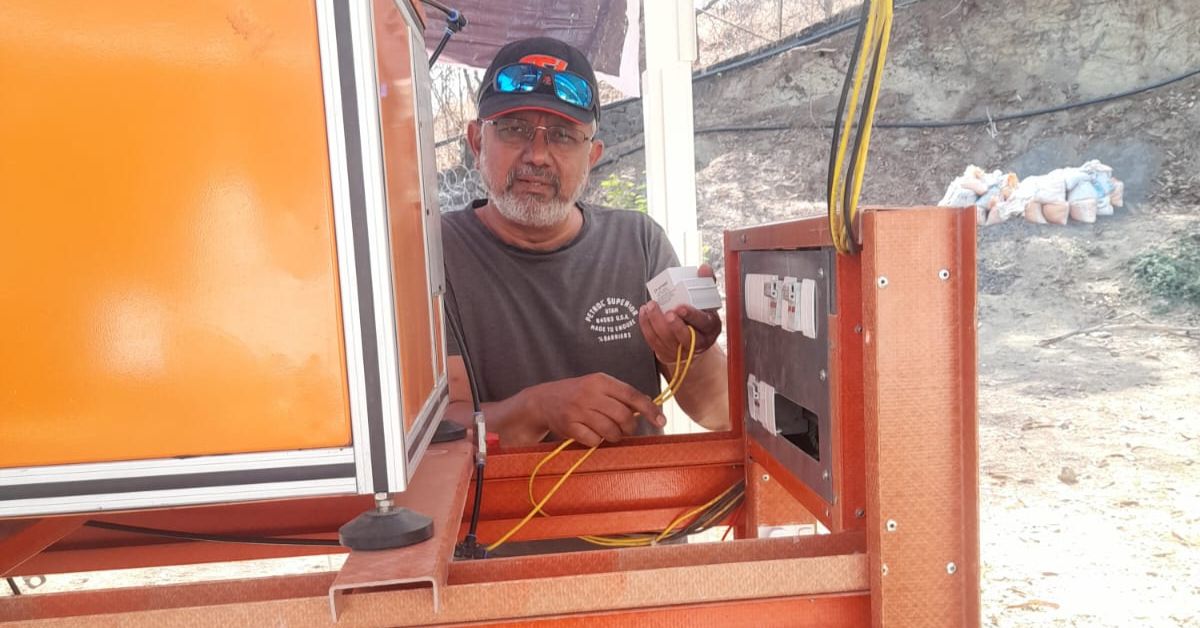 Suneet advocates for off-grid systems with energy storage.
Suneet advocates for off-grid systems with energy storage.
He adds that middle and upper-middle-class consumers may not find the scheme attractive if their solar rooftop investment doesn’t translate into significant cost savings. “People who understand the limitations of the 3 kW scheme will likely look for other options. The next level of subsidy is at 10 kW, but the rate drops considerably,” he adds.
For systems up to 10 kW, homeowners and housing societies are eligible for Rs 9,000- Rs 18,000 per kW for installing rooftop solar systems. “The current subsidy scheme effectively reduces costs for small solar setups, but not for larger projects. Offering better loan terms or insurance support for solar installations could have a longer-lasting impact than just direct subsidies,” Suneet points out.
7. Ensure equitable electricity access
Tanveer highlights another critical gap: current systems require a minimum number of households to justify extending the grid, which leaves many small villages without power. “If a village has fewer households than required, they are not provided with a grid connection. As a result, these smaller communities are left in the dark for extended periods.”
He also points out that electricity needs in rural areas vary widely. Farmers, for instance, require more power to operate electric motors for irrigation, while migrant labourers may only need electricity for basic needs like lights or fans.
“Reforms should ensure wider accessibility regardless of village size and account for the diverse electricity needs of different occupational groups in rural areas,” Tanveer says. “We must ensure access to electricity is tailored to their needs.”
8. Training and capacity building
Education programmes on maintaining solar systems are vital. Tanveer notes that simply donating these systems, without equipping people with the skills to use and care for them, often results in neglect and inefficiencies. Developing local technician-training initiatives can empower communities to maintain their own systems and reduce long-term dependency on outside help.
9. Encouraging CSR initiatives
Greater involvement of CSR (corporate social responsibility) initiatives in solar projects can elevate their impact. These reforms, Tanveer says, should focus on engaging with community-centric solutions that not only address energy supply but also uplift the socio-economic conditions of rural populations.
Such reforms could broaden access to solar energy and facilitate the industry’s sustainable expansion by nurturing innovation, and maintaining high-quality standards.
Through their combined efforts, these entrepreneurs are doing far more than slashing electricity bills; they’re transforming access, ownership, and reforms around sustainable energy. One rooftop at a time, they’re lighting up a new path for India’s energy future.
Edited by Khushi Arora and Tanaya Singh
News